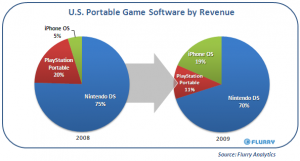Matt Gemmell writes about the complaints about the iPhone NDA, DRM and requirements for certificates. You’re talking about Linux, for christ’s sake. What the hell is wrong with you? If that’s your bag, sod off and install SUSE on your brick and have fun writing your own GPL’d Bluetooth stack. We’ll all still be here, … Continue reading “Experience and Attention”
Matt Gemmell writes about the complaints about the iPhone NDA, DRM and requirements for certificates.
You’re talking about Linux, for christ’s sake. What the hell is wrong with you?
If that’s your bag, sod off and install SUSE on your brick and have fun writing your own GPL’d Bluetooth stack. We’ll all still be here, using our teeny-tiny touchscreen motherfucking sex-phone which is actually going to still be around and commercially viable in 2 year’s time. With AppleCare
This is definitely how I feel about the iPhone when related to OpenMoko and the LiMo linux-based phones though I’m somewhat more confident about the Android efforts. While I think Android will have it’s own job cut out for it by entering a marketplace already hard-fought with Nokia’s Symbian, Windows Mobile and Apple’s iPhone (I suppose we can add Palm in there? Maybe?).
Android brings with it a glut of software. Some will be good, some will be bad. What’s missing from the Android solution seems to be a viable ‘business plan’ other than making money from advertising. I’ve said before and I’ll say it again – I’m the only altruist I trust and Google, with their massive advertising network, is not going to be giving an operating system away free. They care about making sure that as the web goes mobile, they own the sidewalk.
The fact remains, however, if you want handset ‘freedom’ then develop for Android or Symbian. But you take your risks when you do that, like anyone else. We don’t know how that market will play out, whether there will be a market for non-free software at all. And being paid in ‘eyeballs’ doesn’t ring right to me.
By ‘market, of course, I mean ‘money’.
The market for web apps seems to be all about ‘attention’. It’s whether you can keep someone’s eyeballs focussed on the screen long enough to provide them with some advertising to look at. Looking at web based applications, I have to still wonder about the business plans and I fear the lonegvity of any business plan that relies on advertising. On the other hand, I can see people paying to avoid advertising, whether that’s to a service/software provider (a la Twitterific) or to a company which will block advertising using proxy/blacklist/DNS hacks.
In contrast, I would hope the market for mobile software (exemplified by the iPhone) seems to be in ‘experience’. I chose my Twitter client for the iPhone based on experience: Twitterific and Twittelator just didn’t cut it for me and Twinkle provides the right amount of access to my tweets with the added advantage of seeing everyone ‘nearby’.
I’ll for the experience and it takes hard work to create an app that provides experience rather than one that just demands attention.







